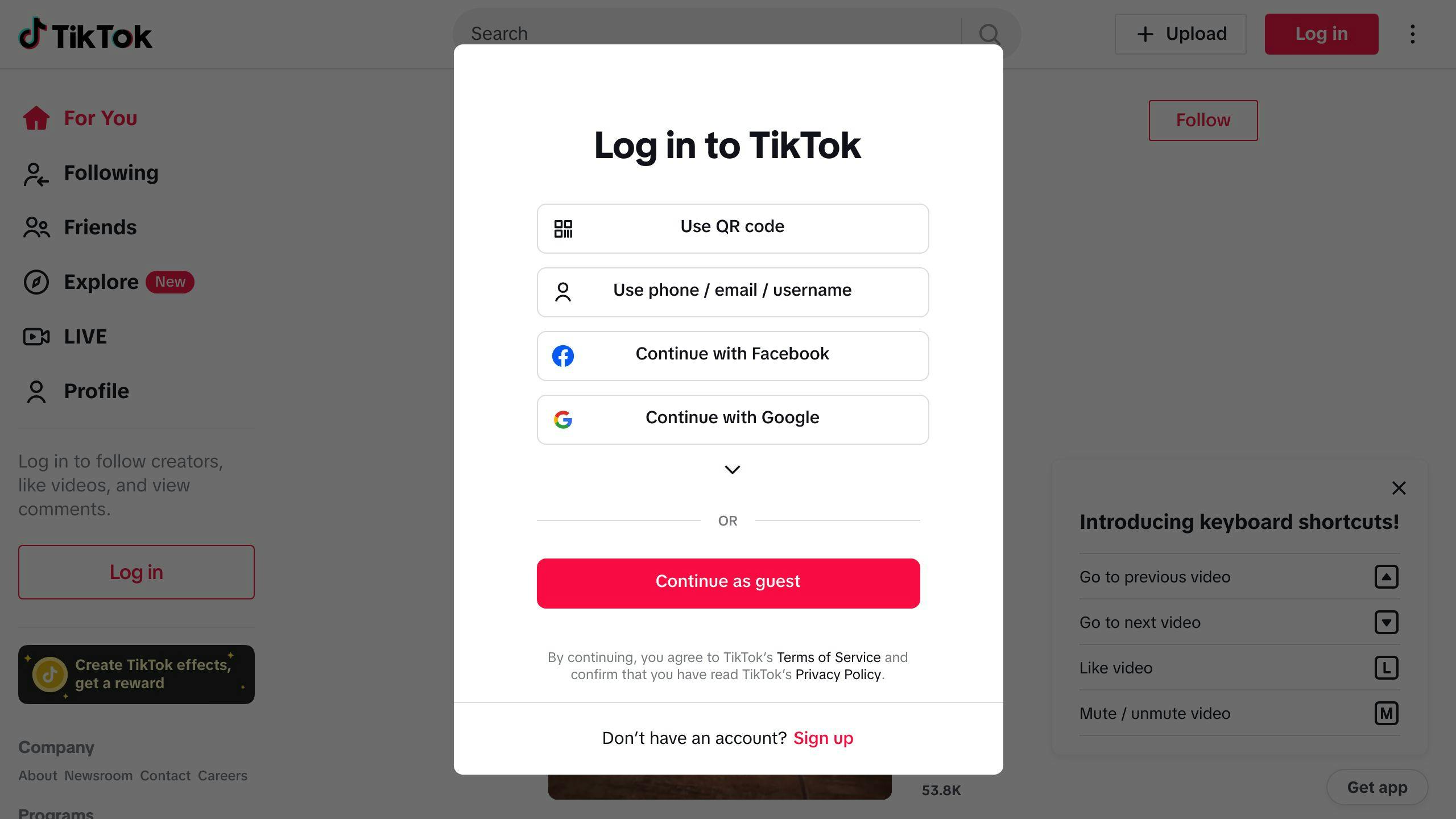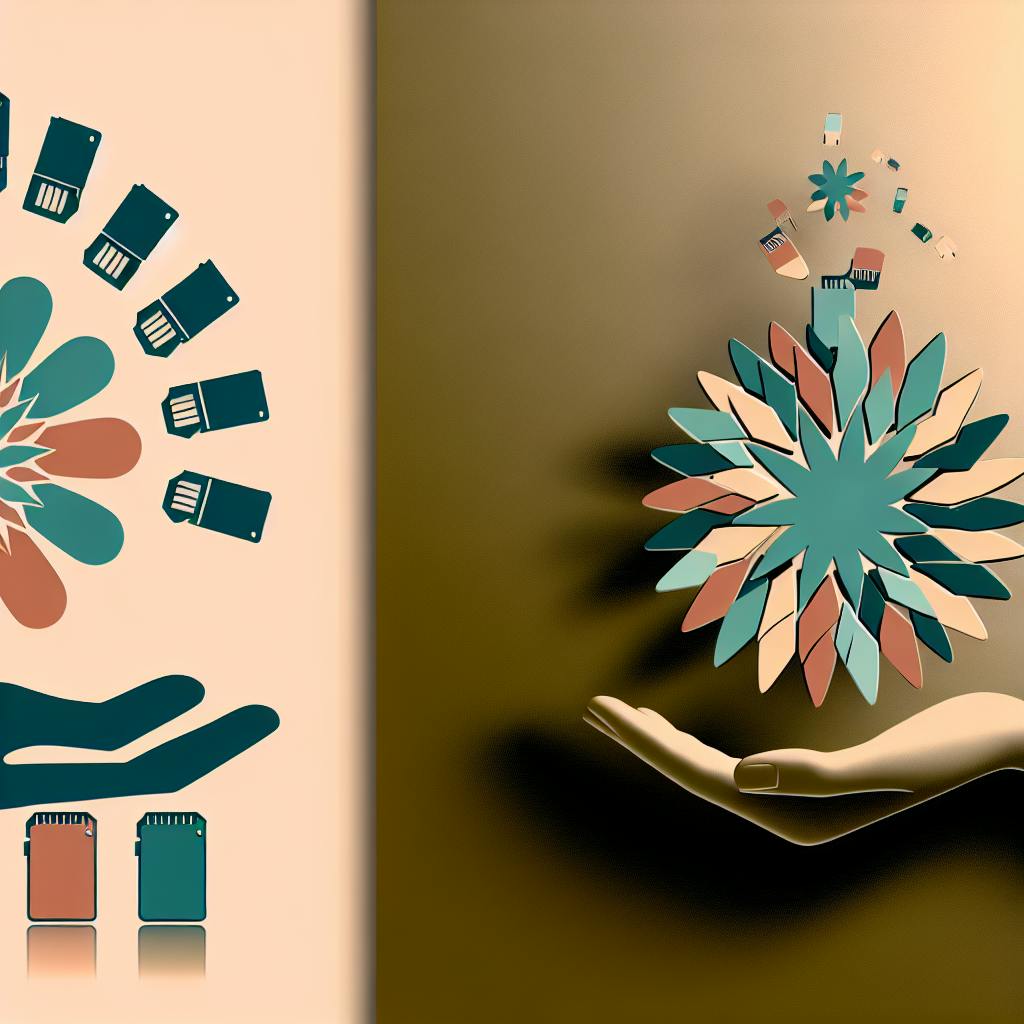Short videos and social media platforms like TikTok, Instagram Reels, and YouTube Shorts have become immensely popular, changing how we consume content. However, this shift towards bite-sized videos has raised concerns about its impact on our ability to focus and maintain attention.
Key Takeaways:
- Research shows that our attention spans are declining, from 12 seconds in 2000 to just 8 seconds in 2021.
- Short-form video platforms like TikTok are designed to capture and retain user attention through features like endless scrolling, dopamine-driven reward loops, and algorithmic content discovery.
- This constant exposure to short videos can lead to a phenomenon called the "TikTok brain," where users expect quick, entertaining content and struggle to engage with longer, more in-depth material.
- The decline in attention span has real-life impacts on academic performance, workplace productivity, social relationships, and mental health.
Strategies for Content Creators:
| Strategy | Description |
|---|---|
| Encourage mindful media consumption | Create content with a purpose, use attention-grabbing hooks, encourage engagement, and provide a call-to-action. |
| Create interactive and immersive experiences | Integrate polls, quizzes, AR/VR, interactive challenges, and live sessions to engage the audience. |
Adapting Education and Workplaces:
| Strategy | Description |
|---|---|
| Reforming education | Use interactive video lessons, hands-on activities, and cater to different learning styles. |
| Workplace productivity | Implement frequent breaks, shorter tasks, and technology integration to help employees stay focused. |
Finding a Balance:
While short-form videos can be engaging, it's crucial to strike a balance between captivating audiences and maintaining attention spans. By adopting strategies that promote mindful media consumption, interactive experiences, and adapting education and workplaces, we can harness the benefits of short videos while preserving our capacity for deep thinking and attention.
The Rise of Short Video Platforms
Understanding the Short Video Boom
The popularity of short-form video content has taken the digital world by storm. Platforms like TikTok, Instagram Reels, and YouTube Shorts have millions of users worldwide. But what drives this popularity? One key factor is the platform mechanics of TikTok, which is designed to capture and retain user attention in short intervals.
Key Features of TikTok
| Feature | Description |
|---|---|
| Endless scroll | Users can scroll through content without interruption |
| Dopamine-driven reward loops | Users receive instant gratification through likes and comments |
| Algorithmic content discovery | The algorithm suggests content based on user behavior |
These features contribute to an addictive experience that keeps users coming back for more.
Changing Viewing Habits and Attention
The frequent engagement with short videos has led to a shift in behavioral patterns. Users are now accustomed to consuming content in quick, entertaining intervals. This can lead to a phenomenon known as the "TikTok brain," where users expect quick, entertaining content and are no longer willing to invest time in lengthy content.
The Impact on Attention Spans
-
Users are no longer reliant on traditional sources like news outlets or educational institutions.
-
They're turning to social media platforms and short-form videos to stay informed and educated.
-
This shift has significant implications for the way we process and retain information.
By understanding the driving factors behind the short-form video boom, we can better appreciate the impact it has on our attention spans and viewing habits. As we continue to adapt to this new landscape, it's essential to be aware of the potential consequences and take steps to maintain a healthy balance between short-form content and more substantial, engaging material.
Attention Spans Over Time
The concept of attention span has been studied extensively over the years. Research shows a decline in the average attention span of individuals.
Focus in the Digital Age
| Year | Average Attention Span |
|---|---|
| 2004 | 2½ minutes |
| 2021 | 47 seconds |
This decline is largely attributed to the rise of digital media and the constant availability of information. With the advent of social media, short-form video content, and instant notifications, our brains have adapted to processing information in shorter intervals.
Heavy media multitaskers have been found to:
-
Perform poorly on standardized tests
-
Struggle with growth mindset
-
Experience difficulties falling asleep
Furthermore, the constant stream of information has led to a culture of continuous partial attention, where individuals are constantly switching between tasks and stimuli. This has significant implications for content creators, who must cater to these rapidly changing attention spans.
To effectively engage audiences, content creators must prioritize:
-
Brevity
-
Clarity
-
Relevance
By understanding the evolving nature of attention spans, we can adapt our content to meet the changing needs of our audience.
Are Our Brains Adapting to Shorter Content?
As we consume more short-form video content, our brains are changing the way they process information. Research shows that our brains are rewiring themselves to handle shorter intervals of information, leading to a decline in attention span.
Short Videos and Dopamine Release
Short-form videos trigger the release of dopamine, a neurotransmitter associated with pleasure and reward. This can lead to an addiction cycle, where our brains crave the instant gratification provided by these short videos. As a result, we start to prefer shorter, more frequent bursts of information over longer, more in-depth content.
Age and Attention Span Impacts
The impact of short-form video consumption on attention span varies across different age groups.
| Age Group | Impact on Attention Span |
|---|---|
| Children | Difficulty sustaining attention, processing complex information, and developing critical thinking skills |
| Adults | Decline in attention span, but brains are more adaptable and can recover with practice and intentional focus |
By understanding how our brains are adapting to shorter content, we can take steps to mitigate the negative effects and cultivate healthier media consumption habits.
Real-Life Impacts of Reduced Attention
The decline in attention span has significant consequences that affect various aspects of our lives. Here are some real-life examples of how reduced attention spans impact our daily lives:
Academic Performance
| Impact | Description |
|---|---|
| Poor grades | Students who spend more time on short-form video platforms tend to perform poorly in school. |
| Lack of understanding | The constant stream of short videos makes it difficult for students to focus on longer, more in-depth content, leading to a lack of understanding and retention of complex concepts. |
Workplace Productivity
| Impact | Description |
|---|---|
| Decreased productivity | Employees who are accustomed to consuming short-form content may struggle to focus on tasks that require sustained attention. |
| Errors and lack of innovation | This can lead to decreased productivity, errors, and a lack of innovation. |
Social Relationships
| Impact | Description |
|---|---|
| Social isolation | Reduced attention spans can lead to feelings of isolation and loneliness, even if we have a large social network. |
| Neglect of friends and family | When we're constantly glued to our screens, we may neglect our friends and family. |
Mental Health
| Impact | Description |
|---|---|
| Anxiety and depression | The constant stream of information and the pressure to keep up with the latest trends can lead to feelings of anxiety and depression. |
| Pressure to keep up | This can lead to feelings of inadequacy and low self-esteem. |
In conclusion, the decline in attention span has significant consequences that affect various aspects of our lives. By understanding the impact of reduced attention spans, we can take steps to mitigate these effects and cultivate healthier media consumption habits.
sbb-itb-bc761f5
Strategies for Content Creators
Encouraging Mindful Media Consumption
As content creators, it's crucial to promote mindful media consumption habits among your audience. Here are some tips to help you do so:
-
Create content with a purpose: Ensure your content serves a purpose, whether it's educating, entertaining, or inspiring your audience.
-
Use attention-grabbing hooks: Craft hooks that grab your audience's attention and encourage them to engage with your content.
-
Encourage engagement: Ask your audience questions, request feedback, or ask them to share their experiences.
-
Provide a call-to-action: End your content with a call-to-action, encouraging your audience to take action, reflect on what they've learned, or apply the knowledge they've gained.
Creating Interactive and Immersive Experiences
To combat the negative effects of short-form video platforms, content creators can focus on creating interactive and immersive experiences that engage their audience and encourage them to focus on the content. Here are some ideas:
| Strategy | Description |
|---|---|
| Integrate polls and quizzes | Incorporate polls and quizzes into your content to encourage audience participation and engagement. |
| Use AR and VR | Utilize augmented reality (AR) and virtual reality (VR) technologies to create immersive experiences that transport your audience into a new world. |
| Create interactive challenges | Design challenges that encourage your audience to take action, solve problems, or complete tasks. |
| Host live sessions | Host live sessions, Q&A's, or workshops that encourage real-time interaction and engagement with your audience. |
By implementing these strategies, content creators can promote mindful media consumption, encourage engagement, and create a more meaningful experience for their audience.
Adapting Education and Workplaces
Reforming Education for Attention Trends
The way we learn is changing, and educators need to adjust to these new attention dynamics. One approach is to break up lessons into more engaging, interactive chunks. This can include using technology, such as educational apps and games, to cater to the evolving needs of learners.
| Strategy | Description |
|---|---|
| Interactive video lessons | Use platforms like Edpuzzle to create interactive video lessons that motivate students to pay closer attention to important details. |
| Hands-on activities | Incorporate hands-on activities and cater to different learning styles to keep students engaged and interested in the material. |
Workplace Productivity and Short Attention
In the workplace, businesses are altering work structures to optimize performance in a workforce accustomed to rapid information consumption. One strategy is to incorporate frequent breaks and shorter tasks to help employees stay focused and productive.
| Strategy | Description |
|---|---|
| Frequent breaks | Implement flexible work schedules and provide opportunities for movement and exercise to help employees manage distractions and reduce stress. |
| Shorter tasks | Break down tasks into shorter, manageable chunks to help employees stay focused and productive. |
| Technology integration | Use project management tools and communication platforms to help teams stay organized and collaborate more effectively, even with shorter attention spans. |
Conclusion: Balancing Content and Attention
As we navigate the world of short-form video content, it's crucial to strike a balance between captivating audiences and maintaining attention spans. While short-form videos can be an effective way to engage viewers, it's essential to be mindful of the potential consequences on our ability to focus and process information.
Finding a Balance
To mitigate the negative impacts, content creators can adopt strategies that promote mindful media consumption, interactive and immersive experiences, and adapt education and workplaces to accommodate the evolving needs of learners and employees.
Strategies for Success
| Strategy | Description |
|---|---|
| Mindful media consumption | Encourage audiences to engage with content in a thoughtful and intentional way. |
| Interactive and immersive experiences | Create experiences that engage audiences and encourage them to focus on the content. |
| Adapting education and workplaces | Alter work structures and educational approaches to optimize performance in a workforce accustomed to rapid information consumption. |
By adopting these strategies, we can harness the benefits of short-form videos while preserving our capacity for deep thinking and attention.
The Key to Success
Ultimately, the key to balancing content and attention lies in developing a nuanced understanding of the complex relationship between short-form videos and attention spans. By acknowledging both the benefits and drawbacks, we can create a media landscape that informs, entertains, and inspires, without sacrificing our ability to engage with the world around us.
FAQs
Is TikTok distracting?

Yes, excessive TikTok use can be distracting. The constant stream of short videos can make it hard to focus on tasks that require sustained attention.
Do short videos reduce attention span?
Short videos can make it harder to concentrate on tasks that require sustained focus. When we're constantly exposed to quick, easily digestible videos, we may find it difficult to engage in deep work or reading books.
How do short videos affect the brain?
Watching short-form videos triggers the release of dopamine, a neurotransmitter associated with pleasure and reward. This can lead to a cycle of addiction, where we constantly crave the next hit of dopamine.
| Effect | Description |
|---|---|
| Dopamine release | Short videos trigger the release of dopamine, making us feel pleasure and reward. |
| Addiction cycle | We may become addicted to the instant gratification provided by short videos, making it hard to focus on tasks that require sustained attention. |



